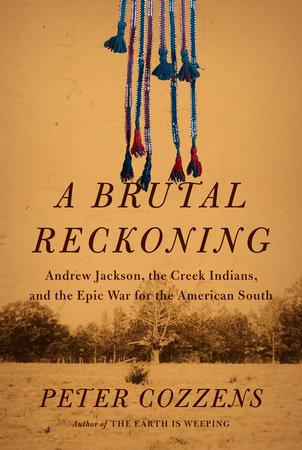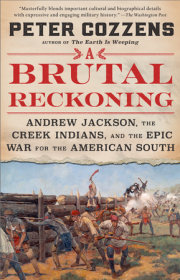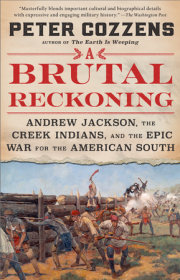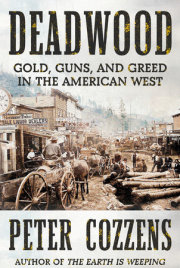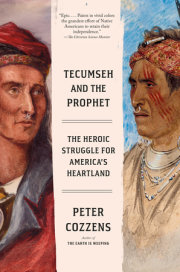Chapter One
From the Ashes of the Entrada
Hernando de Soto craved gold, glory, and gore in quantities that made even his fellow conquistadors quake. When only twenty, he quit the impoverished confines of western Spain to find his fortune in the New World. In the succeeding sixteen years, the hawk-nosed young Spaniard enjoyed dizzying success slaughtering and pillaging indigenous peoples, first in Central America and later in Peru. De Soto returned to Spain wealthy and celebrated. He won the favor of King Ferdinand and Queen Isabella, who appointed him governor of Cuba, with the expectation he would also colonize and plunder La Florida, as the Spanish then called North America.
Before de Soto could rightfully claim La Florida, he had to raise an army and conquer the strange country from its shadowy Native inhabitants. A less ambitious man might have been content to retire with his wealth as master of a settled island domain. But not de Soto. Vague rumors of vast gold deposits resting in the shadow of a dazzling mountain of diamond somewhere in modern South Carolina propelled de Soto onward.
De Soto had no difficulty finding Spanish adventurers to join him. In May 1539 he sailed from Havana for the west coast of what is today Florida, in seven ships with an army of six hundred men and a contingent of a hundred wives, female camp followers, black slaves, craftsmen, and priests. Crammed aboard the rocking galleons, caravels, and brigantines were 220 cavalry horses calculated to overawe the foot-bound natives; several packs of fierce hounds to track down and mangle those who fled; an ample supply of handcuffs, chains, and neck collars with which to enslave the natives; and a huge herd of hogs to supplement provisions pilfered from them.
Well-disciplined but also ruggedly individualistic, de Soto’s conquistadors were a colorful lot, uniformed as befitted their tastes and means. Their basic outfit consisted of a long-sleeved shirt; a short, close-fitting padded jacket (doublet); and pants, breeches, or hose. The cavalry found boots and leather gloves essential, but infantrymen made do with simple sandals. Few could afford full body armor; most wore quilted cotton or leather jackets strong enough to withstand arrows fired from short bows. Affluent conquistadors also sported sleeveless chain-mail vests. Nearly all wore helmets.
De Soto made landfall near present-day Tampa Bay. European diseases—principally smallpox—preceded him. Twelve years earlier, the first Spaniards to explore La Florida had landed nearby and then passed along the Gulf Coast. In their wake the intruders and their pathogens left agony and desolation. With little remaining to despoil, de Soto plodded north toward the fabled land of riches.
Moving inland, the conquistadors met greater American Indian resistance, a natural consequence of de Soto’s brutality. He burned villages that refused him slave laborers and female chattels and tossed natives who displeased him to his man-mauling hounds. In South Carolina, de Soto found neither gold nor the expected mountain of diamond, but he did meet a lovely young Indian queen who beguiled the Spaniard for a season.
Beauty, however, proved no substitute for riches, and in early 1540 de Soto marched into modern North Carolina. There he met large, palisaded villages, from which he demanded food, supply porters, and women. With every mile the avaricious Spaniards traversed, their relations with the inhabitants deteriorated.
No mere savages, the natives of what was to become the American South possessed the richest culture of any indigenous peoples north of Mexico. Owing their immediate allegiance to culturally similar but politically diverse and sometimes warring chiefdoms, the inhabitants belonged to the Mississippian tradition, so named because the culture—if not the people themselves—apparently originated on the banks of the Mississippi River between AD 700 and 900. These residents of what is today Alabama and Georgia spoke predominantly the Muscogean family of languages.
The most salient characteristic of the Mississippian tradition was flat-topped, pyramidal mounds that served as foundations for temples, mortuaries, the homes of chiefs, and other important public edifices. The villages erected around the mounds were formidable, surrounded by deep, water-filled ditches and wooden palisades with defensive towers placed at regular intervals. Larger villages sometimes had interior walls for a second line of defense.
Native weapons gave thoughtful conquistadors pause. Strung with deer sinew, Indian bows were long, elastic, and exceptionally strong. The arrows, fashioned from young cane hardened in flames, had dagger-sharp flint heads. In close combat, warriors wielded short war clubs.
As they entered what would become the Lower Creek country (central and western Georgia), the conquistadors met with markedly improved clay dwellings, similar to, and probably more hygienic than, the abodes of poor rural Spaniards. Native men and women wore shawls “after the manner of the Gypsies,” fashioned from tree bark or grass treated to the consistency of flax. The Indians made moccasins for both sexes and loin coverings (breechclouts) for men from deerskin dressed to “such perfection” that it equaled the finest European broadcloth.
De Soto, however, had come in search of wealth and glory, not to admire the Native culture. In July 1540, his expedition entered the territory of Coosa, the paramount chiefdom of the region, centered on the upper Coosa River in what is today northwest Georgia. Borne on a litter to great fanfare and accompanied by several hundred painted and plumed warriors, at the gates of its northernmost town the principal chief of Coosa greeted de Soto and his men as guests. Ancestors of the Upper Creeks, the people of Coosa were brutal slaveholders, their Native chattel laboring with severed Achilles tendons to prevent their escape. The Spaniards saw vast cultivated fields but no evidence of gold or other mineral riches. Impatient to press on, de Soto repaid the pliant Coosa chief’s hospitality by putting him and several of his headmen in iron collars and chains and forcing them to serve as porters.
De Soto continued south along the Coosa River into present-day Alabama. At each village, he demanded more porters and women and pillaged the few communities that dared to defy him. All went deceptively well for de Soto.
In early October, he bade a ravaged Coosa farewell and entered the central Alabama domain of Chief Tascalusa, an esteemed Native leader. At the town of Atahachi the Spaniards met him, seated regally on cushions atop a mound in the plaza, a lavish feather cape extending to his feet. Towering a foot above the tallest conquistador, Tascalusa impressed a Portuguese officer as “full of dignity; tall of person, muscular, lean, and symmetrical, the suzerain of many territories, and of numerous people, being equally feared by his vassals and the neighboring nations.”
De Soto and Tascalusa paid not the slightest deference to each other. As de Soto climbed the ceremonial mound to confront Tascalusa, the chief sat fixed and unimpressed. De Soto surrounded him with lance-wielding cavalrymen, placed him under arrest, and demanded four hundred male porters and one hundred women. Tascalusa took his detention in stride. He gave de Soto the porters—fine Atahachi warriors all—but told the Spaniard he would have to wait until they reached the town of Mabila, the Atahachi capital, located somewhere between the lower Alabama and the Tombigbee Rivers, before de Soto could have the women. Tascalusa tantalized de Soto with a promise of the loveliest females of Mabila. Perhaps de Soto saw in the haughty chief a kindred spirit because he acceded to Tascalusa’s condition, and the entourage headed west along the bank of the Alabama River toward Mabila.
De Soto expected an easy march across a compliant country. Tascalusa, however, was scarcely the passive prisoner he seemed. Unknown to de Soto, he dispatched a messenger to Mabila summoning all the warriors of his chiefdom to assemble there. De Soto’s scouts cautioned their commander that the people ahead “were evilly disposed.” Perhaps the expedition had best camp in the open outside the gates of Mabila rather than alongside the house that Tascalusa offered de Soto? Recklessly certain of his own invincibility, de Soto dismissed their warnings. Accompanied by a small escort of cavalry, he spurred ahead to Mabila with Tascalusa while the remainder of his command followed at a leisurely pace.
When de Soto neared the town’s fifteen-foot-high beam-and-mud-daub outer walls on the cool and clear morning of October 18, 1540, the local cacique and four hundred cheering Indians festooned with ceremonial feathers and body paint sallied forth, ostensibly to welcome him. Once inside the town of eighty large houses, de Soto and his attendants settled in to enjoy an exotic and stimulating welcome in the town plaza. Fermented drinks circulated freely, and scantily clad, “marvelously beautiful women” danced for the Spaniards. While the bare-breasted dancers swirled and dipped before the mesmerized conquistadors, Tascalusa slipped away into a nearby house. Refusing de Soto’s order to return to the plaza, he instead issued the Spaniards an ultimatum. They must leave immediately or suffer the consequences. Drawing his sword in response, a Spanish officer cleaved off the arm of an Indian headman. In an instant, three thousand warriors poured into the streets shouting war cries and brandishing clubs and bows and arrows. Somehow de Soto and most of his escort slashed their way out of town just as the first soldiers of the Spanish main body appeared on the open plain outside Mabila. Still in the saddle and hacking wildly with his sword, de Soto bristled with nearly two dozen arrows, none of which had penetrated his quilted armor.
The Spaniards faltered and fell back. Tascalusa’s warriors helped the Atahachi porters break their chains and join the fray with weapons seized from de Soto’s baggage train. The unequal battle raged into the afternoon. Spanish cavalry arrived to help balance the odds. When the infantry came up, de Soto signaled a counterattack with the blast of a harquebus. The first rush failed, but de Soto continued to throw his men against the town walls. They hacked at the plaster and cane palisades, creating a breach large enough for a few men to dart inside and set the nearest houses ablaze. The cane-and-thatch roofs ignited in a flash, and a wall of fire rolled across the town. Doomed defenders perished in the flames engulfing Mabila or at the tips of Spanish cavalry lances on the corpse-strewn plain.
The wives of warriors grabbed weapons and fought “with no less skill and ferocity than their husbands,” but Mabila, and with it the Atahachi culture, expired in the flames and frenzy. As twilight settled over the carnage, dazed and wounded conquistadors glanced at the smoldering ramparts. A lone warrior stood upon them. Despairing of escape, he yanked off his bowstring, tossed it over the branch of a nearby tree, wrapped it around his neck, and hanged himself.
No one knows how many Indians perished in the Battle of Mabila. To disguise de Soto’s folly, Spanish chroniclers inflated the Native body count and understated their own losses. Indian dead likely numbered a thousand, including Tascalusa, his headmen, and the entire priestly class. Centuries of collective civic and cultural knowledge also perished in the conflagration that foreshadowed the demise of the Mississippian tradition.
Approximately fifty conquistadors were killed or mortally wounded at Mabila, and nearly half of the Spaniards were wounded. The expedition also lost most of its baggage and half of its horses, both devastating blows. His comrades, said one conquistador, “began to think that it was impossible to dominate such bellicose people or to subjugate men who were so free.”
Bloodied and disillusioned, de Soto’s men grew mutinous. De Soto pushed on, however. He crossed the Mississippi and staggered aimlessly about with his dwindling band until May 1542, when he fell ill from fever and died. A little over a year later, the remnants of the entrada boarded rescue ships on the Gulf Coast and sailed from the scenes of their quixotic misadventures.
The Spaniards might have departed, but they left behind smallpox, a pathogen far more lethal than the carnage they had inflicted with their swords and lances. A scourge for which the Indians had no defenses, nor likely any explanation except divine displeasure, smallpox circulated in droplets or dust particles, infecting nearly everyone. High fevers, vomiting, and painful rashes or blisters tormented the bewildered natives. On those fortunate enough to live, the scabs healed after a week or ten days, leaving behind disfiguring pockmarks. The disease also blinded many who survived. No one knows how many Indians inhabited the South at the time of de Soto’s rapacious odyssey—some have estimated the number at nearly two million—but in three decades following the entrada, upwards of 90 percent died from smallpox and other European viruses.
The mighty chiefdom of Coosa teetered, and that of Atahachi crumbled. The people scattered simply to survive in a land bereft of unifying leadership or the once elevated culture of the Mississippian tradition. When Spaniards next visited what is today southern Alabama in 1560, Mabila lay in ruins. The few Indians who lingered amid the debris practiced a primitive agriculture, and the former chiefdom proved so barren that the Spaniards had to press on to avoid starvation. Six years later, a final Spanish expedition toppled what remained of Coosa with viruses. Afterward the Spaniards contented themselves with colonies along the Florida coast, and the curtain of recorded history closed over the region. The Indians separated, then coalesced in new and smaller groupings, scratched out small plots, and toiled at subsistence farming. Saplings and underbrush invaded the spacious clearings once tended by Atahachi and Coosa farmers. Gradually, the great forests of the South reclaimed the land.
In 1670 the historical record resumed in the South when the English settled Charles Towne on the Carolina coast. From their coastal enclave, British traders edged their way inland to turn a profit at the Indians’ expense. Three years later, French explorers penetrated the Mississippi valley, looking both to counter British influence and to expand their own commerce with the Indians. Spain, meanwhile, clung to the Florida settlements as buffers between its rich Caribbean holdings and the growing British presence on the Atlantic coast of North America.
The European interlopers danced about the periphery of four southeastern American Indian peoples who emerged from the remnants of the great Mississippian tradition chiefdoms. These were the Choctaws, Chickasaws, Cherokees, and Creeks. While vibrant and relatively sophisticated, theirs were simpler societies than those of their ancestors. Given the toll that European pathogens had taken, it is remarkable that cohesive cultures of any sort reemerged.
Not only did they reemerge—precisely how, the natives themselves did not know—but within a century the four new Indian societies of the Deep South also prospered. Each had a well-defined domain that it zealously defended against periodic incursions by Indian neighbors. Scattered about the rolling hill country of what is today northwestern Alabama and northern Mississippi were the Chickasaws, a tough, warlike, but comparatively small tribe of perhaps six thousand members.
To their immediate south lived the Choctaws, who numbered at least twenty thousand. The Choctaws claimed most of the Mississippi piedmont and coastal plain, as well as a sliver of western Alabama. The Chickasaw and Choctaw country lay west of the Tombigbee River, and both tribes belonged to the Muscogean language family.
Copyright © 2023 by Peter Cozzens. All rights reserved. No part of this excerpt may be reproduced or reprinted without permission in writing from the publisher.

